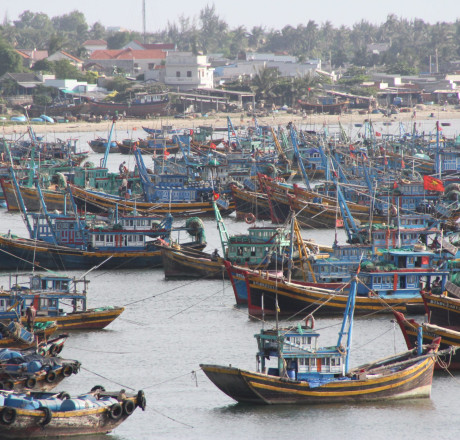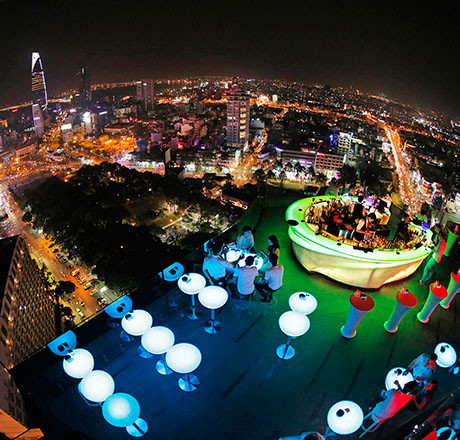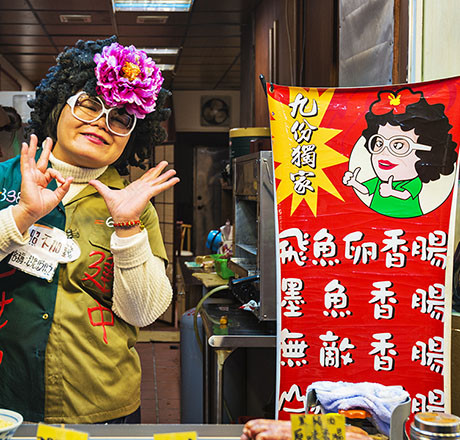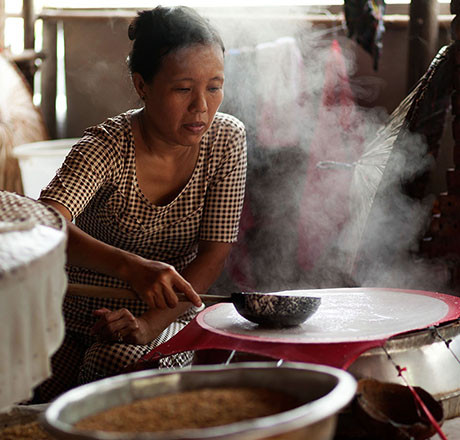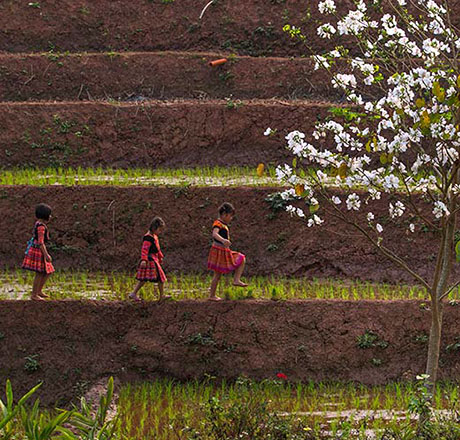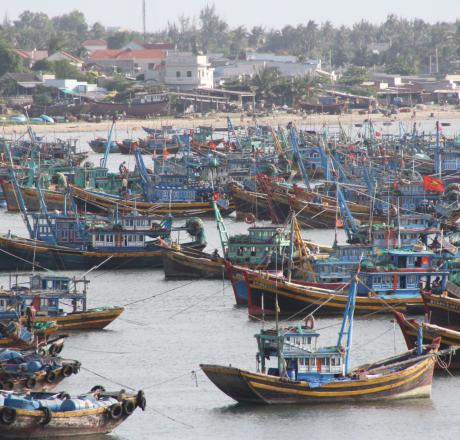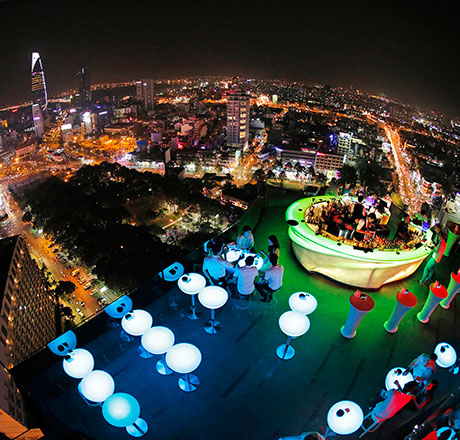Vietnam
Vietnam
Hanoi Hops in Vietnam
In Vietnam’s northern city of Hanoi, kegs of bia hơi (fresh beer), brewed daily without preservatives, are strapped to the back of motorbikes and are on their way to bia hơi joints – the local equivalent of a pub – before most visitors to the frenetic city have sipped their first cup of cà phê sữa đá (Vietnamese iced coffee).
In Hanoi, the day starts early. Soon after dawn, around the atmospheric Hoan Kiem Lake, groups of energetic older residents are getting their morning exercise, while, at phở stands all over town, noodle soup is being ladled into bowls. Elsewhere another daily ritual is taking place. Stainless-steel 100-litre kegs of draught beer begin rolling out of the three main breweries – Hanoi Brewery, Viet Ha Brewery and South East Asia Brewery – to bia hơi spots around the city.
While it was the French who introduced beer to Vietnam, it was the Vietnamese who made it fresh, to be consumed the same day as production – just like almost every dish of traditional Vietnamese food. Today bia hơi makes up about 30 per cent of the beer sold across Vietnam, the bulk of which is downed in Hanoi, where bia hơi culture is very firmly rooted. Here, there’s a beer joint on every city block, and in Hanoi’s labyrinthine old quarter there’s one on almost every corner.
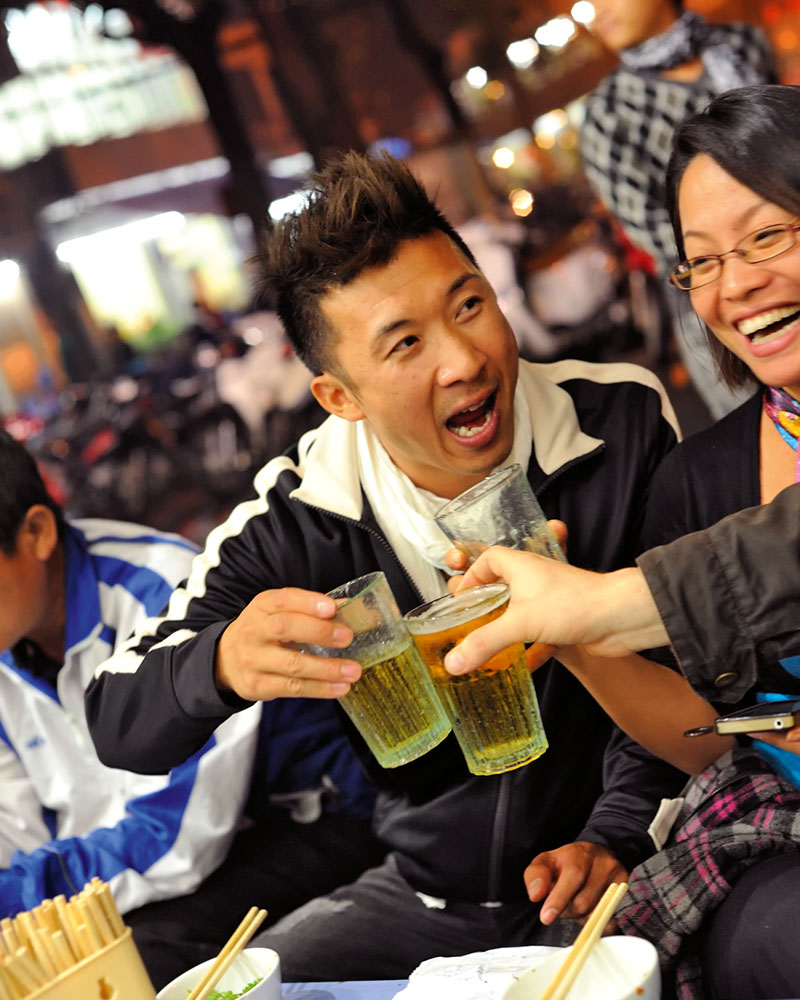

While the old quarter bia hơi outlets range from a bare room in someone’s shop-house to an open-sided corner-block ‘pub’, the further you travel from the centre the more you’ll see purpose-built, shed-like structures with enough room to house more than a hundred thirsty punters.
In a typical bia hơi, the beer is kept cold through some often innovative contraptions that surround the keg in ice, with the beer flowing into endearingly imperfect recycled glass tumblers via a hose, often of the garden variety. If the bia hơi joint doesn’t have a fancy ‘cooling system’ you’ll be presented with the alternative: a bucket of ice and tongs.
If a bia hơi is having a particularly busy morning – or afternoon or evening – you’ll see a motorbike screech to a halt outside to offload another keg, which should see the establishment through a busy drinking session that can attract groups of a dozen or more locals who pull up tiny plastic stools and join tables together to settle in for the night.
At a popular bia hơi you’ll see groups ordering round after round of the refreshing beer yet still not swaying. That’s because bia hơi is low in alcohol – 2.5 to 4.5 per cent – making it a very quaffable brew. It’s also low on cost – fetching about 8000 Vietnamese dong a glass (about 35 cents).
Each joint has its idiosyncrasies that attract regular drinkers. Some are known for being early openers, catering to the older, retired guys who start early and drink slowly as they methodically nibble at mountains of pumpkin seeds. The more ‘upmarket’ places – and we use that term loosely – feel more commercial, with fast service, shiny stainless-steel tables and an extensive menu of food designed to go down well with a few brews.
For these places, the food is as big an attraction as the icy amber liquid. The moment you arrive the waiter will toss you a packet of spiced peanuts (a Hanoi specialty) while you take in the aromas of dried squid grilling over a portable charcoal burner or a seafood hotpot bubbling on the next table. Drinking dens popular with Hanoi’s burgeoning hipster set serve hot cheese sticks and sugary French fries. Other bia hơi places are beloved for more filling fare, such as fried tofu and roasted pork ribs, or more ‘exotic’ treats like fried eel and grilled frog legs.
While it was the French who introduced beer to Vietnam, it was the Vietnamese who made it fresh, to be consumed the same day as production.
At our favourite spot, Bia hơi Ha Noi Cua Hang Ngoc Linh, it’s the delicately fried tofu, lightly salted ribs and fresh morning glory sautéed with garlic that keeps us going back. On our first visit there, two guys at the next table were having a post-work beer – or five – and ordering dishes in anticipation of their mates turning up. As plates started to fill their table, we took to pointing and ordering whatever we thought looked delicious.
Noting that we could eat – and drink – like the locals, our table neighbours were soon pointing sticky fingers at the menu to suggest further dishes, demonstrating how to eat them and mix the sauces. A few beers later and we were ordering each other rounds, clinking glasses before every gulp. Thanks to the low alcohol content of the beer these nights can be memorable – and still be able to be remembered.
One of our most unforgettable bia hơi experiences happened on our first night in Hanoi. Pulling up a tiny stool at an old town streetside bia hơi at around 10pm, we had just clutched our first beers when the local police decided it was too late for these footpath establishments to be trading. Mayhem broke out and before we could stand, the proprietor whisked our plastic stools from beneath us and packed the whole place away before the police could confiscate his gear. Like the other patrons, we briskly disappeared into the night, quickly downing our beers as we went.
In the three months we spent in Hanoi, we were drip-fed tips on places to try for the atmosphere or a dish that a particular bia hơi did well. But, like the locals, we always returned to our favourites. Once you get into the habit of heading to a particular bia hơi, it becomes as essential a ritual as that early-morning phở or mid-morning coffee.
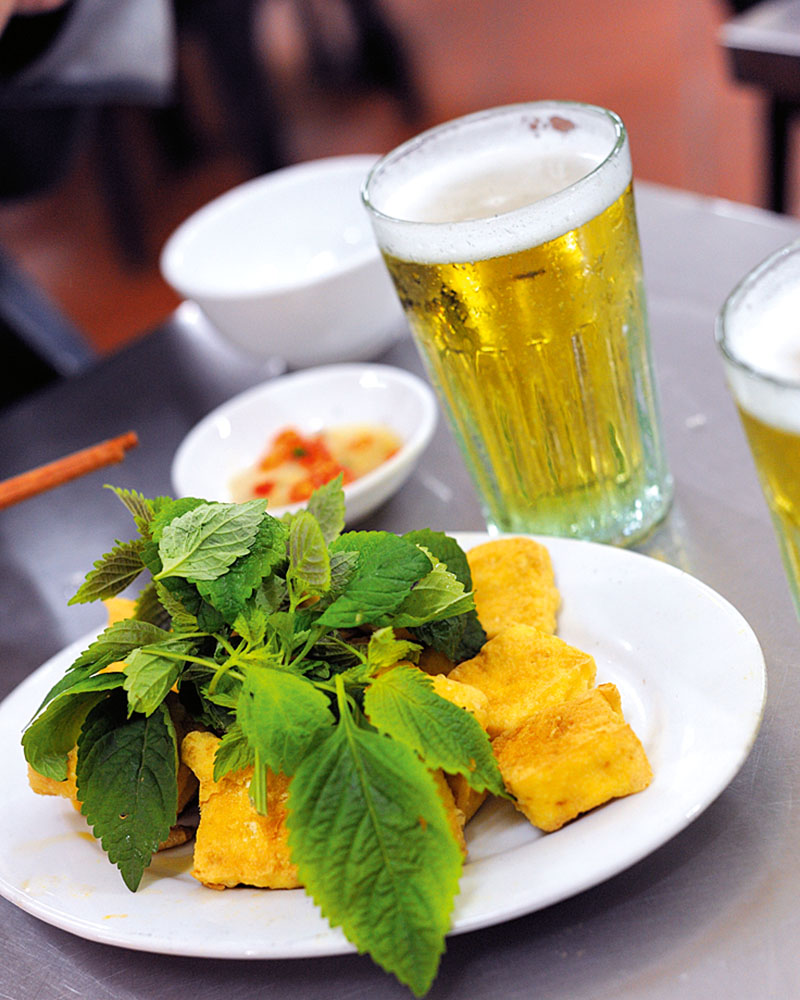

The most surprisingly delicious dish at a good bia hơi joint is fried tofu. Tofu is made daily in Hanoi, so find the freshest you can to make this dish. The dipping sauce, muoi tieu chanh, is not as famous as nuoc cham (the ubiquitous fish sauce-based dipping sauce), but is just as present on Vietnamese tables and lifts any dish it touches.
INGREDIENTS
200ml vegetable oil
500g silken tofu (the firmer the
better), drained, patted dry, and cut into
3cm bite-sized cubes
1 bunch Vietnamese basil (or Thai basil),
leaves removed and roughly torn
Muoi tieu chanh (salt, pepper and lime
dipping sauce)
coarse salt
white pepper
lime wedges
bird’s-eye chillies, thinly sliced ((to taste)
METHOD
Make the sauce first. Muoi tieu chanh is always mixed to personal taste. Start with, say, a tablespoon of salt, half a tablespoon of pepper and the juice of a quarter of a lime, mixed to make a sauce. Taste and adjust as necessary. Locals will usually put a couple of pieces of chilli into the sauce and mix it around to give the sauce more kick.
Heat the oil to medium-high in a deep saucepan or wok. Dip a wooden chopstick into the oil to check the temperature – when bubbles form around the chopstick, you’re ready to cook. Place the cubes of tofu carefully into the pan. Cook until lightly browned and puffy (around three minutes) and place on absorbent paper. Plate the tofu on a serving tray and mix with the basil. Eat by dipping a piece of tofu and a basil leaf into the sauce.
Words Lara Dunston
Photos Terence Carter
Tags: Hanoi beer, Hanoi Brewery, South East Asia Brewery, Viet Ha Brewery
 (
(




